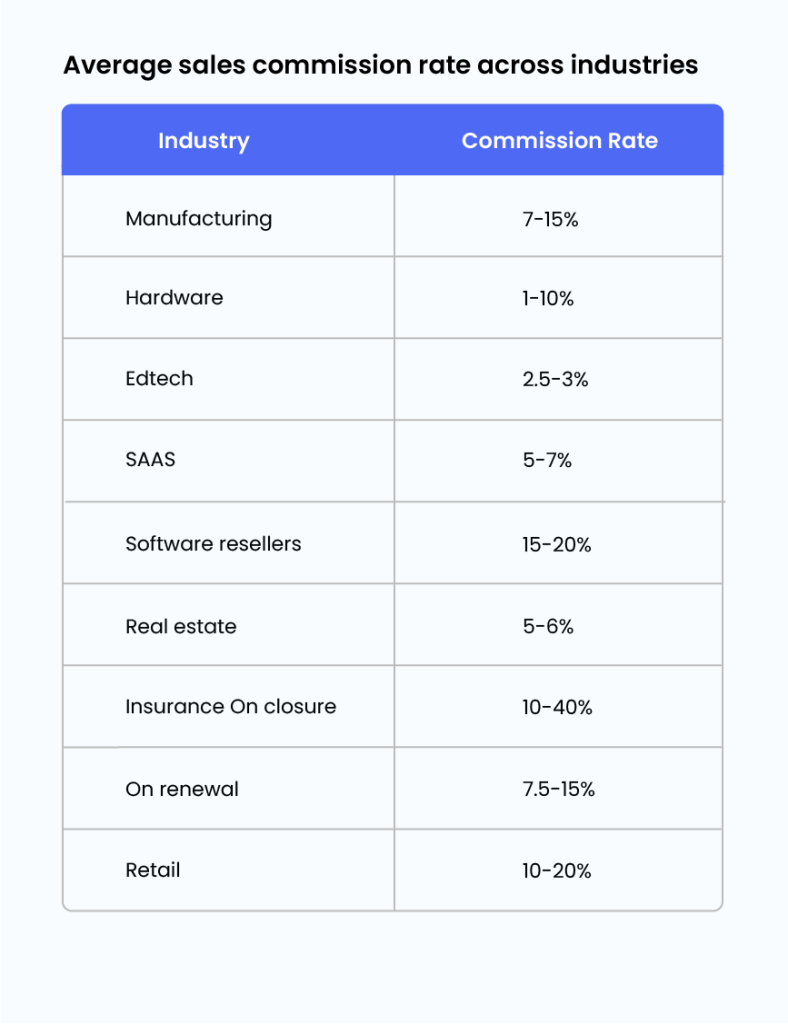On the surface, sales seems to be a pretty straightforward process — connect with potential ideal customers or clients and compel them to buy from you.
But it’s quite tricky to execute if the required sales outreach systems aren’t in place.
If not done right, it’s nearly impossible to get the attention of decision-makers as you’re unable to get your message across, which you need to in only a few seconds.
In this article, we explore the differences between relationship-based sales and cold outreach approaches to scale your business, and lay out five key steps for doing sales outreach at scale.
Let’s jump in!
Relationship-Based Sales vs Cold Outreach — What’s The Difference?
Cold outreach and relationship-based sales have unique strengths suited for different business situations. So to pick the right one, businesses must understand their circumstances and objectives, potentially using a combination of both approaches for targeted and broad outreach (especially in the nascent stages).
Relationship-based sales are well-suited for small niche markets with high pricing and recurring clients, focusing on the importance of building strong relationships for long-term customer retention and increased customer lifetime value (CLV). This personalized approach tailors solutions to individual clients’ needs – including personalized sales decks, pricing, and terms and focuses on building trust — but it is time-intensive and impractical for large-scale outreach.
On the other hand, cold outreach is ideal for larger client pools with lower pricing and less recurring business, allowing businesses to efficiently reach a wide audience. It can be easily scaled through automation, email marketing, cold calling, and social media outreach.
Although it may have lower conversion rates due to the absence of pre-existing relationships, it remains effective for landing new customers when targeting a prospect list in 1000s.
Please note that relationship-based sales cannot and should not be done at scale. For that, only cold outreach works. So, you can adopt the relationship-based sales approach to build your business, and quickly switch over to cold outreach once scaling is on the cards.
How To Do Sales Outreach At Scale?
Identify Your Client Profile
Before you can have what you want, you must know who to get it from.
Precisely why, mapping your ideal customer profile (ICP) involves understanding the characteristics of your ideal customer and defining the key attributes that make them an excellent fit for your product or service.
And this isn’t a one-shot process, but a trial-and-error one. Why? Because this is the only optimal way to maximize your sales outreach efficiency and increase your chances of engaging with decision makers who are more likely to convert into valuable, long-term customers.

[Source]
Here’s how you do it right:
- Define the criteria that your perfect client should meet — such as industry, company size, revenue, location, and other relevant data.
For example, you might target the ‘VP of Marketing’ at ‘Supply Chain companies with XX revenue’ to focus on decision-makers with significant purchasing power. - Ensure that your product aligns with the needs and challenges of the identified client profile, tailoring personalized outreach messages that highlight the value proposition.
- Gathering market research and data from industry reports, competitor analysis, and customer feedback will help validate your client profile assumptions. Continually refine your profile based on insights and outcomes from outreach efforts.
- The trial and error approach can be applied by initially conducting a broader outreach to different potential decision-makers, monitoring responses, and tracking success rates for various roles.
- Analyze the results to determine the decision-maker persona with the best engagement metrics, then concentrate on those with the highest conversion and engagement rates.
- Regularly update and optimize your client profile to remain relevant as market conditions evolve.
Use Third-Party Tools To Capture Contact Details
Leveraging third-party tools for contact details and optimizing outreach timings based on time zones, helps your sales outreach become more efficient, relevant, effective, and on-point to an international audience. Plus, it increases the chances of building relationships with the clients that have deep pockets.
Here’s how it works:
- ZoomInfo and similar platforms grant access to a vast database of business contacts and professionals. By aggregating information from various sources like company websites, social media profiles, and public records, these tools ensure reliable and accurate contact details. Automating this process saves time and minimizes errors when conducting sales outreach at scale.
- Different regions operate on diverse work schedules, impacting response rates significantly. Utilize data from third-party tools to segment your contact list based on time zones, ensuring you reach prospects during appropriate working hours.
- Many outreach tools and CRMs automatically convert time zones, allowing you to schedule emails or calls at the most suitable times for recipients. This optimization enhances the chances of engagement, as outreach sent during regular working hours sees improved email open and call response rates.
- Personalization based on the prospect’s location makes communication more relevant and effective. Show consideration by avoiding outreach during major holidays or non-working days, respecting prospects’ time and priorities.
- Automated sales tools streamline this scheduling process for emails and follow-ups in advance. Set up follow-up sequences for prospects who haven’t responded initially, adjusting based on time zone and response behavior to maximize engagement. And remember, there isn’t a hard no in sales, period.
Set Up An Online Schedule Based On Different Time Zones
Managing multiple time zones poses logistical challenges — which can lead to a sales nightmare!
To ensure efficient communication and avoid inconvenient outreach times, create an online schedule based on recipients’ respective time zones. By doing so, you also demonstrate professionalism, which only leads to a positive and mature client relationship.
Here’s how to achieve this:
- Employ time zone converter tools to set up an online schedule accommodating different time zones. These tools convert your outreach activities’ specific dates and times into local times of your target audience. Many websites and applications, like Dateful, offer user-friendly time zone conversion features, while some email clients and productivity tools also have built-in capabilities.
- Group your contacts into segments based on their respective time zones — such as Europe, North America, Asia, etc. Use data from third-party tools (like ZoomInfo) to automate the assignment or manually sort based on location.
- Research working hours and communication habits of each time zone to determine the best outreach times. Consider local business hours, lunch breaks, and cultural norms for professional communication.
- Utilize automation tools and email marketing platforms to schedule outreach activities in advance. Set delivery times based on the recipient’s time zone, ensuring messages are sent at the most appropriate times.
- Track response rates and engagement across different time zones. Analyze data to identify optimal time frames for each segment and continuously optimize timing.
- While scheduling based on time zones is crucial, be responsive to prospects who prefer communication outside regular business hours. Adjust your schedule to accommodate their preferences.
- For cold-calling, employ a local workforce in each of the different geographies you operate in. These SDRs understand local dynamics better, and conversions generally see an uptick. Hiring international employees may appear daunting at first, but is necessary to scale up your outreach across different markets.
A/B Test Different Work Communications
The better you communicate, the more you can engage prospects and boost conversion rates. And A/B testing helps you do it better and at scale.
A/B testing involves creating different versions of messages (emails, cold call scripts, social media posts) and comparing their performance. This iterative process refines communication based on real data, maximizing outreach effectiveness.
Some key pointers to hit the right spot with A/B testing:
- Each variant should have a specific purpose, serving different objectives. Personalization and intent-based outreach are key to building rapport and relevance with prospects.
- Customize variants to align with target audience preferences, industry, demographics, and pain points.
- Experiment with different content and tones — including message length, humor, formality, and word choices.
- Subject lines play a crucial role in email outreach. A/B test different subject lines, including straightforward and curiosity-driven approaches.
- Track open rates, click-through rates (CTR), response rates, and conversion rates for each variant to identify the most resonant communication style.
- Some recipients prefer to look at a sales deck instead of having to sit on a call. Experiment with the different strategies, or ask your prospect what they prefer.
- Continually optimize and refine communication based on insights gained from each test, integrating successful variants into your sales outreach strategy.
Scale Up Your Outreach With Additional High-Quality Resources
You can grow at your desired speed when you accept that you can’t do it alone, and need an army of skilled helping hands.
So, scaling your successful sales outreach involves expanding efforts through additional resources — such as rockstar contractors for cold-calling. This broadens outreach and taps into contractors’ expertise in various time zones and local markets.
To achieve this:
- Gradually scale up outreach efforts, considering available resources and response capacity.
- Outsource outreach to agencies like LeadJoint to manage increased volumes efficiently.
- Benefit from contractors’ local knowledge and cultural understanding in major markets across different time zones.
- Implement a (fixed + commission-based) payout structure to incentivize contractors and drive successful conversions.
- Find quality contractors through recruitment platforms, referrals, and assess relevant skills and expertise.
- Offer comprehensive training and support to align contractors with your sales objectives.
- Monitor and report contractor performance regularly to improve and align their approach with your sales strategy.

[Source]
Final Words
The sales strategies that worked for you to build your business will not work when you want to scale it.
You will be able to sell more when you can tie your product back to what’s important for your customers, and you’re more likely to win repeat business when you follow up and stay connected — at their local and appropriate time.
Treat every potential customer like a long-term partner, and you’ll quickly find that you don’t have to chase them to be your client.
And remember, doing sales outreach at scale doesn’t mean sacrificing genuine interactions. Instead, it enables you to reach a broader audience while maintaining the essence of meaningful relationships.
Apply the above-mentioned steps to build and execute a scalable sales outreach system and watch clients flock to you!

